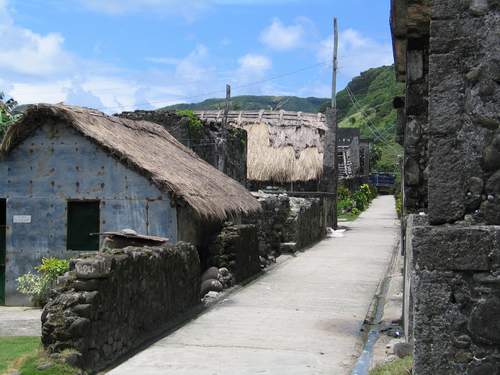
The island province of Batanes was created by a series of volcanic activities and other geologic forces millions of years ago.
The province is home to the famous Ivatans who are nationally acclaimed as the ¡°True Insulares.¡± The Ivatans are of Malay stock, tracing their roots to early immigrants from Formosa, Taiwan as well as Spaniards who came to the island in the 16th century. Being an insular people, the Ivatans have kept the purity of their gene pool through time.
Batanes lies at the northernmost tip of the Philippines, where the Pacific Ocean merges with the South China Sea. It is composed of three major islands, namely: Batan which contains the capital town of Basco, Sabtang, and Itbayat. Close by are seven islets including Amianan, which is the closest to Formosa. Thus, Batanes has been identified as the country¡¯s potential gateway to East China.
Geography
"The island-province is strewn on a 4,500 square kilometer expanse of territorial waters, the Luzon Strait and Balintang Channel, where the Pacific Ocean merges with the South China Sea, a sealane between the Philippines and the southern parts of Japan, China, Hongkong, and Taiwan. It is bounded on the north by the Bashi Channel, on the east by the Pacific Ocean, on the west by the South China Sea, and on the south by the Balintang Channel. It is characterized by gently rolling hills, cliffs, and black and white sand beaches.
Batanes is about 860 kilometers (approx. 525 miles) from Manila. Basco, the capital town, is about 280 kilometers north of Aparri and about 190 kilometers south of Taiwan.
Political Subdivision
Batanes has six municipalities, 29 barangays, and one congressional district. The six municipalities are Ivana, Uyugan, Mahatao, Basco (the capital), and the island municipalities of Sabtang and Itbayat.
Climate
The Batanes weather is rather pleasant. Compared to the rest of the country, Batanes is blessed with a cooler, balmier climate. It enjoys practically four seasons, the best one being summer which is from March to June. Average monthly rainfall is 450 mm.
Population
The 2002 census of population for Batanes registered a population total of 16,467 distributed over a land area of 230 square kilometers.
Language / Dialect
The mother tongue of Batanes is Ivatan, spoken by 93.94 percent of all households. The Ilocano dialect is also spoken while Filipino and English are generally spoken and understood.
Major Industries
The province has a total agricultural land area of 5,438 hectares and has a wide area open for agricultural expansion. Due to its terrain, it is a major livestock producer with cattle as its main stock. Carabaos and goats are also popularly raised. Another major industry is fishing which reaches its peak during the summer months, from March to June, when the seawater is relatively calm.
Source: Lakbaypilipinas.com

No comments:
Post a Comment